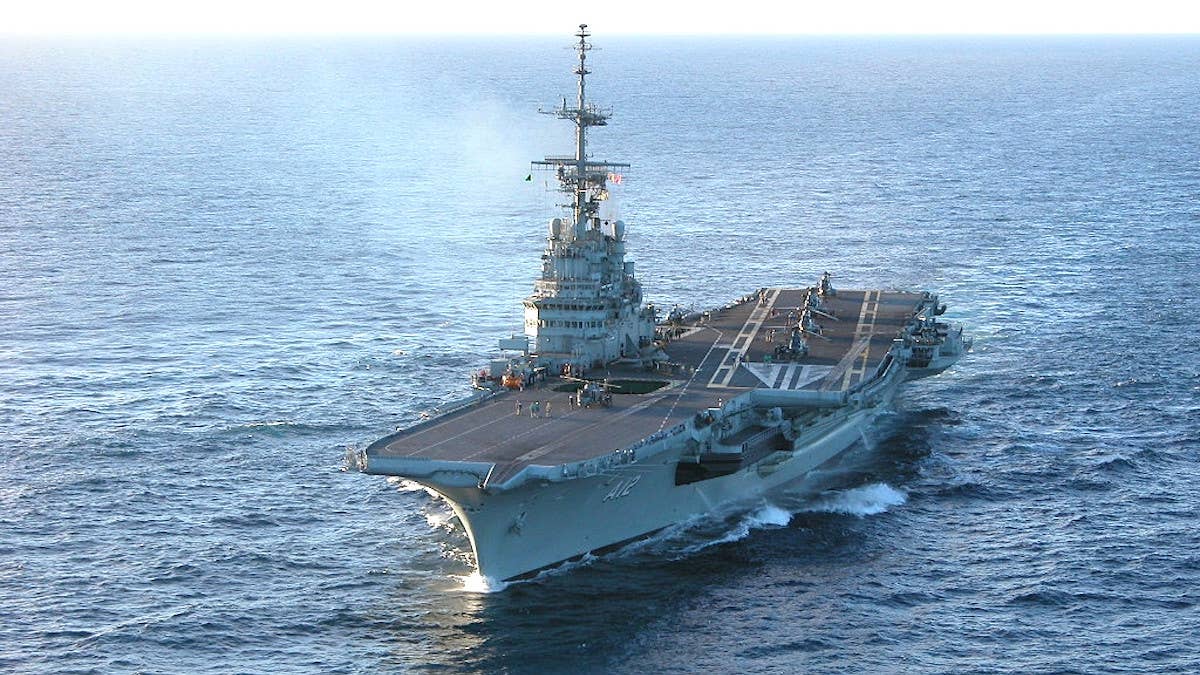A 34,000-ton, 870-foot Brazilian aircraft carrier Sao Paulo, which is currently drifting aimlessly somewhere in the South Atlantic, could be sunk off the coast of Brazil, reported Folha de São Paulo.
The ship, embroiled in a global controversy over its toxic contents, is on the verge of becoming one of the biggest pieces of trash ever to enter the ocean, according to the report.
The 60 years old Brazilian Navy ship was sold for scrap to a Turkish shipyard in 2021. It departed for Turkey in August 2022 from a naval facility in Rio de Janeiro.
However, while it was on the move, Turkey revoked its entry permit, claiming Brazil had failed to show that Sao Paulo was loaded with asbestos, a dangerous mineral utilized to construct some ships during the 20th century. The boat, therefore, made a U-turn.
Brazil, meanwhile, has no interest in getting its former warship back. In September 2022, a port on the Pernambuco state coast prohibited the vessel from docking. The port authorities said there was a big chance the ship would be abandoned, forcing port officials to foot the bill for transferring it and handling the asbestos.

It was abandoned for five months to circle aimlessly near the Brazilian coast. On January 20, Brazil’s Navy revealed that the ship had been moved into international waters.
In another twist to the sorry fate of the old aircraft carrier SAO PAULO A12, the Brazilian Navy on 20 Jan seized the ship from Turkish owners saying it was in danger of sinking. Ship is prevented from docking in Brasil as an environmental hazard https://t.co/KLD8d5MRlp pic.twitter.com/VKm1gDk7EL
— Chris Cavas (@CavasShips) January 23, 2023
The Navy contends it had no choice because the aging ship, which suffered hull damage during its journey, could have grounded or sunk off the coast of Brazil, endangering other vessels and creatures that live along the shore.
The Brazilian military is now considering abandoning the ship at sea. According to military sources who spoke to the Brazilian daily Folha de So Paulo, the Navy’s next action might be to sink it with explosives.
The so-called controlled sinking will be achieved through a series of explosions that will open tears in the hull, releasing more than nine tons of asbestos from the vessel into the ocean.
Environmental Concerns
The ship’s drama is likely to turn into an extreme episode of vessel abandonment, an issue that directly impacts coastal areas and marine conservationists worldwide.
According to the Basel Action Network (BAN), an NGO, the ship has thousands of metric tons of asbestos and other dangerous compounds in its electrical wiring, coatings, and fuel tanks. Ocean watchdogs believe that sinking a ship as large and old as the Sao Paulo would be an environmental catastrophe.
Jim Puckett, the anti-waste non-profit Basel Action Network executive, told the Time that sinking the ship would be considered “gross negligence.”
“We’re talking about a ship containing both hazardous and valuable materials—it’s supposed to be brought into the territory of Brazil and managed in an environmentally sound way,” Puckett says. “You can’t just sink it.”
The Brazilian Ministry of the Environment, concerned about the potential environmental effects of asbestos, has also condemned the Navy’s intention to leave and sink the ship.
The Minnesota Department of Health states that asbestos fibers may contribute to deadly diseases like lung cancer and asbestosis, which results in lung scarring.

According to Folha de So Paulo, Brazil’s environment minister, Marina Silva, raised concerns about asbestos with José Mcio Monteiro, the defense minister. However, the Navy will ultimately decide how to handle the ship.
Decommissioned ships are frequently sent to shipyards for dismantling. One such location where large boats are scrapped is the Alang-Sosiya Shipyard on India’s western coast. The Aliaga shipyard in Turkey also disassembles cruise ships and sells the parts.
In fact, in Brazil, Guanabara Bay in Rio de Janeiro state is where 200 ships, including cargo ships and oil tankers, have been abandoned by their owners due to financial or legal difficulties.
Other boats out there have been abandoned to rot on the open ocean. But a warship this size, which is about two-thirds the height of the Empire State Building, might end up being among the biggest pieces of trash in the water.
The Pacific trash vortex, a massive accumulation of plastic waste and marine debris off the west coast of the United States, still dwarfs it. Nonetheless, the exact location where the ship would be eventually drowned and when is unclear.





